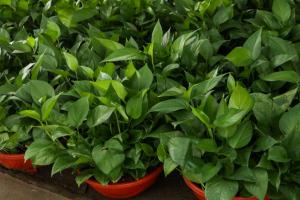How to Pot Carnivorous Plants
Carnivorous plants are a fascinating addition to any plant collection. These unique plants have adapted to thrive in environments with poor nutrients by developing ways to capture and digest insects and other small prey. Proper potting is essential to provide the carnivorous plants with the necessary conditions to grow and thrive. Here is a step-by-step guide on how to pot carnivorous plants.
Step 1: Choose the Right Potting Mix
Carnivorous plants require a specific type of soil because they grow in nutrient-poor environments. The ideal potting mix for carnivorous plants should be composed of peat moss, sand, and perlite. Avoid using potting soils that contain fertilizer or any other additives like vermiculite, as this can harm your plants.
Step 2: Choose the Right Planter
The right planter for carnivorous plants should have good drainage and be wide and shallow. This type of container will allow for the plant's roots to spread evenly, and prevent waterlogging. A plastic or glazed ceramic pot is ideal as it will retain moisture, which is essential for carnivorous plants.
Step 3: Prepare the Potting Mix
Once you have chosen the right pot and potting mix, it's time to prepare the potting mix. Mix equal parts of peat moss, sand, and perlite. It is important to use clean hands or gloves to avoid contaminating the mix with any bacteria or fungus.
Step 4: Potting the Plant
Now that everything is ready, it's time to pot the plant. First, fill the pot with enough potting mix to cover the drainage hole. Then, gently remove the plant from its current pot and loosen the roots to encourage new growth. Place the plant in the center of the new potting mix and fill the gaps with the potting mix until the plant is securely potted.
Step 5: Watering and Care
The final step is to water the plant and care for it appropriately. Carnivorous plants require a lot of water, and they should be kept moist at all times. To avoid mineral buildup, use distilled water, rainwater, or reverse osmosis water. These types of water have a low mineral content and will help your carnivorous plant grow healthy and strong.
In conclusion, potting carnivorous plants requires specific preparation and materials. By following these steps, you can provide your plants with the perfect environment to thrive and prosper. Remember that carnivorous plants are unique and require specific care, but they are an absolute joy to have in your plant collection.

 how many times do yo...
how many times do yo... how many planted tre...
how many planted tre... how many pine trees ...
how many pine trees ... how many pecan trees...
how many pecan trees... how many plants comp...
how many plants comp... how many plants can ...
how many plants can ... how many plants and ...
how many plants and ... how many pepper plan...
how many pepper plan...





























